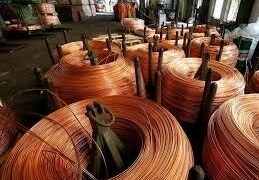Rubber extended a decline after falling in February, on concern that demand for the commodity may weaken after manufacturing growth slowed in China and Japan’s consumer prices dropped.
The contract for delivery in August lost as much as 2.3 percent to 286.3 yen a kilogram ($3,089 a metric ton) before trading at 286.6 yen on the Tokyo Commodity Exchange at 11:49 a.m. Futures lost 7.2 percent last month, the worst performance since June.
A Chinese manufacturing index fell for a second month as a gauge of new orders declined, a signal the nation’s economic recovery may be losing steam. Japan’s consumer prices excluding fresh food fell 0.2 percent in January from a year earlier, the third-straight decline, the statistics bureau said.
“Japan’s macro economic data are lower than market expectations, and Chinese statistics aren’t good today,” said Naohiro Niimura, a partner at research company Market Risk Advisory in Tokyo.
China’s manufacturing Purchasing Managers’ Index was 50.1 in February, the National Bureau of Statistics and China Federation of Logistics and Purchasing said today in Beijing. That compares with the 50.5 median estimate in a Bloomberg News survey of 31 analysts and 50.4 in January. A reading above 50 indicates expansion.
Thailand, Indonesia and Malaysia may extend export cuts if prices drop below $3 per kilogram when the program ends in March, Darmansyah Basyaruddin, chief executive officer at the International Rubber Consortium, told reporters at seminar in Jakarta on Feb. 27.
Thailand, the largest producer, agreed with Indonesia and Malaysia last year to cut exports by a combined 300,000 tons in the six months through March. The action came after prices slumped to an almost three-year low of 205.6 yen in August.
The contract for September delivery on the Shanghai Futures Exchange fell 2.4 percent to 24,120 yuan ($3,875) a ton. Thai rubber free-on-board gained 0.6 percent to 89.2 baht ($3.00) a kilogram yesterday, according to the Rubber Research Institute of Thailand.
Source: Boomberg



























